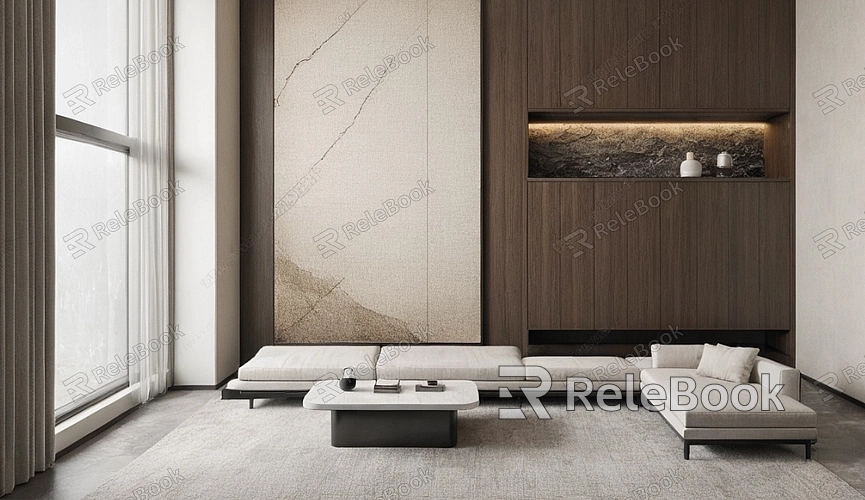How to Add Shapes to Models in SketchUp?
SketchUp is a highly popular 3D modeling software used in fields such as architectural design, interior decoration, and landscape design. Its user-friendly interface and powerful features help designers and artists quickly turn their ideas into visual representations. Mastering the process of adding complex shapes to models in SketchUp is particularly important. This article will explore various methods for adding shapes in SketchUp and provide practical tips and advice.

Overview of SketchUp Basics
Before adding shapes, it's crucial to understand the basics of SketchUp. SketchUp is known for its intuitive user interface and rich toolset. Users can start modeling with simple geometric shapes and use tools like Push/Pull, Move, and Rotate to convert 2D shapes into 3D models.
SketchUp supports multiple file formats for import and export, making it easy to collaborate with other design software. Additionally, SketchUp’s extension library offers a wealth of plugins that enhance the software's functionality, allowing users to complete design tasks more efficiently.
Creating Basic Shapes Using Drawing Tools
SketchUp provides a variety of drawing tools that make it easy to create basic shapes. Users can draw fundamental shapes using tools like lines, rectangles, and circles. These basic shapes can serve as the foundation for adding more complex graphics later on.
1. Using the Line Tool
The Line tool is straightforward; you simply click and drag your mouse to draw a line segment. Users can enter precise lengths using the keyboard to ensure the line meets their design requirements.
2. Using the Rectangle Tool
The Rectangle tool allows users to quickly create rectangular shapes. By clicking and dragging on the working plane, users can generate the desired rectangle. Entering exact dimensions ensures that the rectangle's size meets design specifications.
3. Using the Circle Tool
The Circle tool is used to draw circles and arcs. Users can click and drag at a specific location to create a circle and can also input the radius for precise size control.

Using the Push/Pull Tool for 3D Modeling
Once basic shapes are created, the Push/Pull tool can help users transform these 2D shapes into 3D models. Users simply select the face they want to push or pull and drag the mouse to extrude it upwards or downwards.
1. Understanding the Push/Pull Tool's Functionality
The Push/Pull tool can not only create solids but also be used to cut or thicken existing models. By adjusting the height of the push or pull, users can flexibly shape the model.
2. Tips for Using the Push/Pull Tool
Users can use keyboard shortcuts to quickly select and operate the Push/Pull tool to improve efficiency. Additionally, combining it with other tools can achieve more complex shape modifications.
Adding Complex Shapes and Textures
After completing the basic model, users may want to add complex shapes and textures to enhance visual appeal. SketchUp supports importing various graphic and texture formats, allowing users to achieve this with simple steps.
1. Importing External Graphics
Users can download graphic files from other design software or websites. SketchUp supports multiple formats, such as PNG and JPEG. Just select “Import” from the “File” menu, find the desired file, and import it.
2. Using the Texture Editing Tool
SketchUp’s texture editing tools help users apply various materials to the model's surfaces. By selecting the “Materials” panel, users can choose existing textures or customize textures to enhance the model's realism.
Extending Functionality with Plugins
To further enhance design capabilities, users can install plugins to expand SketchUp's features. Many plugins are specifically designed to add complex shapes or simplify the modeling process, and users can find them in SketchUp’s extension library.
1. Recommended Plugins
For example, the "SketchUp Shop" plugin helps users more easily create complex shapes. Meanwhile, the "Profile Builder" plugin enables users to quickly create and modify shapes, boosting modeling efficiency.
2. Installing and Managing Plugins
Users can install and manage plugins through the "Extensions" menu in the "Extension Manager." Choosing plugins that fit your needs not only improves efficiency but also makes designs more creative.
Practical Tips
Adding shapes in SketchUp is not something that happens overnight; it requires ongoing practice and exploration. Here are some practical tips to help users improve efficiency in their modeling process.
1. Make Full Use of Layers
Using layer management tools can help users separate different parts of the model, improving clarity in the design. When making complex modifications, hiding unnecessary layers can reduce distractions.
2. Save Work Regularly
During extended modeling sessions, users should save their work periodically to prevent accidental data loss. It’s also advisable to use the “Save As” feature to keep different versions of designs for comparison and reference.
Adding shapes to models in SketchUp is an essential skill that enhances both the aesthetics and functionality of designs. By mastering drawing tools, the Push/Pull tool, and texture editing tools, along with utilizing plugins to extend capabilities, users can complete design work more efficiently. Through continuous exploration and application of small tips, you can unlock more possibilities in your designs. To access a richer variety of 3D models and textures, feel free to visit the Relebook website and download resources to support your design journey.
FAQ
How do I add shapes in SketchUp?
You can use drawing tools (like lines, rectangles, and circles) to create basic shapes, and then use the push/pull tool to convert them into 3D models.
How do I import graphics into my model?
Go to the “File” menu and select “Import,” then choose the graphic file (like PNG or JPEG) you want to import into your model.
How do I apply textures to the surface of my model?
Select the face you want to texture, open the “Materials” panel, choose a suitable texture, and click to apply it to the model's surface.
Are there shortcuts to quickly draw shapes?
Yes, using keyboard shortcuts can help you quickly select and operate drawing tools, improving your workflow efficiency.

